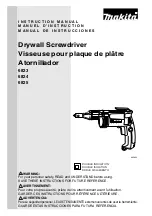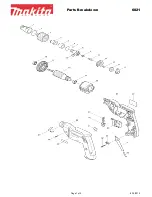
Appendix Service Information
Measurement Techniques
178
General Measurement Techniques
To achieve best results when measuring load regulation, peak to peak voltage,
and transient response time of the power supply, measuring devices must be
connected through the hole in the neck of the binding post at (A) while the
load resistor is plugged into the front of the output terminals at (B). A
measurement made across the load includes the impedance of the leads to the
load. The impedance of the load leads can easily be several orders of the
magnitude greater than the power supply impedance and thus invalidate the
measurement. To avoid mutual coupling effects, each measuring device must
be connected directly to the output terminals by separate pairs of leads.
Figure A-2 Front/Rear Panel Terminal Connections
Electronic Load
Many of the test procedures require the use of a variable load resistor capable
of dissipating the required power. Using a variable load resistor requires that
switches should be used to connect, disconnect, and short the load resistor.
An electronic load, if available, can be used in place of a variable load resistor
and switches. The electronic load is considerably easier to use than load
resistors. It eliminates the need for connecting resistors or rheostats in parallel
to handle power, it is much more stable than carbon-pile load, and it makes
easy work of switching between load conditions as is required for the load
regulation and load response tests. Substitution of the electronic load requires
minor changes to the test procedures in this chapter.
Programming
Most performance tests can be performed from the front panel. However, an
GPIB or RS-232 controller is required to perform the voltage and current
programming accuracy and readback accuracy tests.
The test procedures are written assuming that you know how to program the
power supply either from the front panel or from an GPIB or RS-232 controller.
See “Output Setting and Operation Commands”, starting on page 81 for
complete instructions on remote programming.
TO MONITORING
DEVICE
TO LOAD OR
CURRENT
RESISTOR
[Front Panel (Side View)]
(Rear Panel)
Summary of Contents for E364XA Series
Page 9: ...8...
Page 15: ...14 Contents Contents...
Page 16: ...1 Quick Start...
Page 26: ...2 General Information...
Page 38: ...3 Front Panel Operation and Features...
Page 70: ...4 Remote Interface Reference...
Page 122: ...5 Error Messages...
Page 133: ...Chapter 5 Error Messages Calibration Errors 132...
Page 134: ...6 Application Programs...
Page 145: ...Chapter 6 Application Programs Example Program for Excel 97 144...
Page 146: ...7 Tutorial...
Page 157: ...Chapter 7 Tutorial Remote Programming 156...
Page 158: ...8 Specifications...
Page 166: ...Appendix Service Information...
Page 175: ...Appendix Service Information General Disassembly 174 General Disassembly...
Page 207: ......
Page 208: ......
Page 209: ......
Page 210: ......
Page 211: ......
Page 212: ......
Page 213: ......
Page 214: ......
Page 215: ......
Page 216: ......
Page 217: ......
Page 218: ......
















































